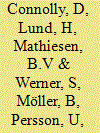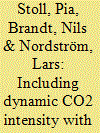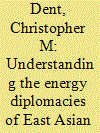|
|
|
Sort Order |
|
|
|
Items / Page
|
|
|
|
|
|
|
| Srl | Item |
| 1 |
ID:
127267


|
|
Heat roadmap Europe: combining district heating with heat savings to decarbonise the EU energy system
/ Connolly, D; Lund, H; Mathiesen, B.V; Werner, S, Möller, B, Persson, U, Boermans, T, Trier, D, Ostergaard, PA, Nielsen, S
|

|
|
|
|
| Publication |
2014.
|
| Summary/Abstract |
Six different strategies have recently been proposed for the European Union (EU) energy system in the European Commission's report, Energy Roadmap 2050. The objective for these strategies is to identify how the EU can reach its target of an 80% reduction in annual greenhouse gas emissions in 2050 compared to 1990 levels. None of these scenarios involve the large-scale implementation of district heating, but instead they focus on the electrification of the heating sector (primarily using heat pumps) and/or the large-scale implementation of electricity and heat savings. In this paper, the potential for district heating in the EU between now and 2050 is identified, based on extensive and detailed mapping of the EU heat demand and various supply options. Subsequently, a new 'district heating plus heat savings' scenario is technically and economically assessed from an energy systems perspective. The results indicate that with district heating, the EU energy system will be able to achieve the same reductions in primary energy supply and carbon dioxide emissions as the existing alternatives proposed. However, with district heating these goals can be achieved at a lower cost, with heating and cooling costs reduced by approximately 15%.
|
|
|
|
|
|
|
|
|
|
|
|
|
|
|
|
| 2 |
ID:
127269


|
|
|
|
|
| Publication |
2014.
|
| Summary/Abstract |
Hourly demand response tariffs with the intention of reducing or shifting loads during peak demand hours are being intensively discussed among policy-makers, researchers and executives of future electricity systems. Demand response rates have still low customer acceptance, apparently because the consumption habits requires stronger incentive to change than any proposed financial incentive. An hourly CO2 intensity signal could give customers an extra environmental motivation to shift or reduce loads during peak hours, as it would enable co-optimisation of electricity consumption costs and carbon emissions reductions. In this study, we calculated the hourly dynamic CO2 signal and applied the calculation to hourly electricity market data in Great Britain, Ontario and Sweden. This provided a novel understanding of the relationships between hourly electricity generation mix composition, electricity price and electricity mix CO2 intensity. Load shifts from high-price hours resulted in carbon emission reductions for electricity generation mixes where price and CO2 intensity were positively correlated. The reduction can be further improved if the shift is optimised using both price and CO2 intensity. The analysis also indicated that an hourly CO2 intensity signal can help avoid carbon emissions increases for mixes with a negative correlation between electricity price and CO2 Intensity.
|
|
|
|
|
|
|
|
|
|
|
|
|
|
|
|
| 3 |
ID:
171534


|
|
|
| 4 |
ID:
121959


|
|
|
|
|
| Publication |
2013.
|
| Summary/Abstract |
Energy security is one of the major global challenges of the twenty-first century. Intensifying competition for ever scarcer forms of conventional energy resources is causing significant tensions in the international system. East Asia will have a more profound impact on global energy security than any other region as its burgeoning demand for energy fuels, spurred principally by China, is expected to continue growing at over twice the world average in the next few decades. This paper examines the reasons why we may expect the energy diplomacies of East Asian states to become an increasingly salient feature of East Asian states' foreign policy and international relations in the foreseeable future, and thereby significantly shape the nature of the region's international political economy. It presents a framework of energy diplomacy analysis in order to better understand how East Asian states are formulating their energy diplomacy strategies and actions. The four prime elements of this framework comprise: empirical perspectives and generic task-oriented terms; agential influences on the formation and organization of energy diplomacy practice; the energy-development nexus; and transaction mechanisms of energy diplomacy. The main conclusions are first, mercantilist approaches to energy diplomacy will persist but continue to gradually give way to market institutionalism; second, energy diplomacy will become increasingly linked to other forms of diplomacy, such as trade, environment and development assistance; third, we may expect East Asian states to afford greater priority to multilateral energy co-operation both regionally and in a wider international or global sense as energy security interdependencies deepen; and fourth, East Asia's growing reliance on sourcing energy fuels from outside the region will make it more dependent on stable international energy markets-these markets are becoming increasingly internationalized and globalized, which will broaden the future options of East Asian states developing new international energy partnerships.
|
|
|
|
|
|
|
|
|
|
|
|
|
|
|
|
|
|
|
|
|